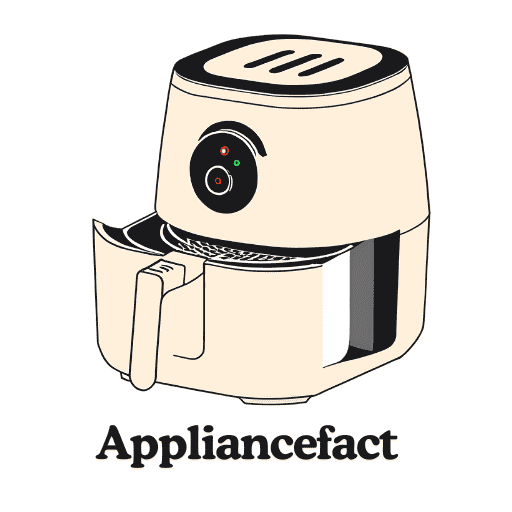A Blendjet blender is used for quick and convenient blending of food ingredients for making smoothies, shakes, sauces, and more. Everything is possible when the Blendjet blends food ingredients properly. However, if the blender is not blending the food ingredients, then nothing is possible with it.
If you are a Blendjet user and your Blendjet blender not blending, then this article is specifically for you. Here we have mentioned all the possible causes and solutions for why a Blendjet not blending. Also, we have separately mentioned all the possible causes and solutions for why Blendjet does not blend ice and frozen fruit. So, read the article if you feel the necessity.
Note: Our information is suitable for both Blendjet 1 and Blendjet 2.
Contents
Blendjet Not Blending! Why And How To Fix?
Your Blendjet is not blending for several causes. The most common causes for your Blendjet not blending are low battery charge, power button issues, wrong blade installation, overloading, lack of a sufficient amount of liquid, manufacturing defects, and jammed blades.
Also, your Blendjet blender is not blending because of stuck blades, residues, motor overheating, wrong lid placement, improper base alignment, motor issues, ingredients quality, frozen ingredients, blender age, and more.
Details:
- Charge:
Ensure that your Blendjet is charged. If its battery level is low, then it may be a cause for the issues. Charge your Blendjet properly before attempting to use it. Your Blendjet will take at least 1.5 hours to be charged fully.
2. Power button:
Ensure that your Blendjet power button is working properly and your Blendjet is turning on. If there are any issues with the power button, fix it immediately.
3. Blades:
Check if your Blendjet blender blades are properly installed. The blade should be securely screwed onto the base. Read your Blendjet user manual to install your Blendjet blade properly with the base.
Also, ensure that your Blendjet blades are not dull or damaged. If the blades are damaged, replace them. If the blades are dull, try to sharpen them using blade-sharpening tools.
4. Food Ingredients:
Ensure that you are not overloading your Blendjet with ingredients. Keep in mind that overfilling can strain your Blendjet motor and prevent it from blending. Always follow manufacturer instructions while filling your Blendjet with food ingredients.
5. Liquid Level:
Ensure there is enough liquid in your Blendjet jar. A lack of a sufficient amount of liquid in the jar can hinder the blending process. Keep in mind that a large amount of liquid in the jar may force your Blendjet to leak.
6. Blend Time:
Try blending for an appropriate period. Sometimes, your Blendjet may take a bit more time to achieve the desired consistency.
7. Jammed Blades:
If your Blendjet blades are stuck, it can also be a cause for the issues. In this case, to dislodge any trapped ingredients, try gently shaking your Blendjet or use a blade scraper spatula. Be careful while handling the sharp blades to avoid any unexpected accidents.
8. Cleaning:
Make sure your Blendjet blender is clean from any previous residues. The previous residues in the jar can affect your Blendjet’s blending process. Always clean your Blendjet properly before blending anything using it.
9. Motor Overheating:
If your Blendjet’s motor has overheated, let it cool down for a few minutes before attempting to blend again. Keep in mind, due to an overheated motor, your Blendjet may start showing different types of issues like not turning on, not working, not blending, etc.
10. Blender lid:
Ensure that your Blendjet blender lid is properly secured on the blender jar. Blendjet has safety mechanisms that prevent its blending process if the lid is not correctly in place.
11. Blender Base alignment:
Check if your Blendjet blender cup is properly aligned with the blender base. If it is not sitting securely on the base, it can affect the blending process.
12. Frozen Ingredients:
If you are blending frozen fruits or other frozen ingredients in your Blendjet, cut them into small pieces before blending. Frozen items can put extra strain on your Blendjet motor and affect your Blendjet’s blending process.
13. Blender Speed:
If your Blendjet personal blender has multiple speed settings, try adjusting the speed. Start at a lower speed and gradually increase it to see if that helps with the blending process.
14. Motor Issues:
The motor is the most important part of your Blendjet. If it is malfunctioning, your Blendjet won’t blend your food. If you hear unusual noises coming from your Blendjet blender or if your Blendjet’s motor seems to be struggling, there may be an issue with the motor itself. In this case, it is better to buy another new Blendjet instead of repairing the motor.
15. Reset:
Sometimes just a simple reset can solve your Blendjet blending issue. So, reset your Blendjet.
16. Wear and Tear:
Inspect your Blendjet blender blades, jar, and other components for any signs of wear and tear. Replace the damaged parts immediately.
17. Quality of Ingredients:
The quality and freshness of ingredients can also affect your Blendjet blending.
18. Blendjet age:
If your Blendjet is too old, it may lose its blending power over time. In this case, consider buying a new Blendjet.
19. Manufacturing defects:
If the above steps do not work and if your Blendjet is new and it is not blending at the very first use of it, you can be sure that your Blendjet has come with manufacturing defects which is why it is not blending. In this case, contact Blendjet customer service and return it.
Blendjet Not Blending Ice! Why And How To Fix?
Your Blendjet is not blending ice for several causes. The most common causes and their solutions are mentioned below:
Details: Why A Blendjet Blender Not Blending Ice & How To Fix?
- Crush Ice before blending:
Break down large ice cubes into smaller pieces before blending. This reduces the strain on your Blendjet blender’s motor and blades.
2. Start with less ice:
Start the blending with less ice and add more gradually. Overfilling the jar can overload the motor and affect the blending process.
3. Add sufficient liquid in the jar:
Make sure there is enough liquid in your Blendjet blender jar. Adding a sufficient amount of liquid (water, juice, or any preferred liquid) helps the blender blades move more freely and facilitates the blending of ice.
4. Start with a low speed:
Start blending at a low speed and gradually increase the speed as needed. Starting at a lower speed allows the blender to catch and break down the ice more effectively.
5. Use the pulse function:
Try using the pulse function for short bursts. This will help break down the ice without putting excessive strain on the motor.
6. Check blade assembly:
Ensure that your Blendjet blades are properly assembled and securely attached to the base. If your Blendjet blender blades are not aligned or seated correctly, it will affect the blending process of your Blendjet.
7. Avoid overheating:
If you are blending large quantities of ice, take breaks to prevent the motor from overheating. Let your Blendjet cool down for a few minutes before resuming.
8. Sharp Blades:
Ensure that your Blendjet blender blades are sharp and not damaged. Over time, blades can become dull, affecting their ability to cut through ice. If your Blendjet blades are dull, try to sharpen the blades or consider contacting the manufacturer for replacement blades.
9. Use crushed ice:
If possible, use crushed ice instead of large ice cubes. Crushed ice is generally easier to blend and requires less power.
10. Quality of Ice:
The quality of ice can also make a difference. If your refrigerator dispenses ice, use that rather than larger ice cubes from trays, as it tends to be softer.
11. Check for Jams:
Occasionally stop your Blendjet blender and check for any ice jams. If the blades are stuck, use a blade scraper spatula to free them before continuing.
Blendjet Not Blending Frozen Fruit! Why And How To Fix?
Your Blendjet may not blend frozen fruit for several causes. The most common causes for your Blender not blending frozen fruit are insufficient power, blade dullness, overloading, lack of liquid, blade blockage, and blade alignment. Also, your Blendjet may not be blending for frozen fruit quality, motor issues, user errors, internal issues, and more.
Details:
- Insufficient Power:
If your BlendJet’s battery is low or not fully charged, it may lack the power needed to blend frozen fruit effectively. Ensure that your Blendjet blender is adequately charged before use.
2. Blade Dullness:
Over time, your Blendjet blender blades can become dull, especially when frequently used with frozen ingredients. Dull blades may struggle to cut through frozen fruit. If you think your Blendjet blender blades are dull, replace them with new blades.
3. Overloading:
If you overload your Blendjet blender with too much frozen fruit, it can strain your Blendjet motor and impede the blending process. Try blending smaller batches to avoid overloading.
4. Insufficient liquid:
Frozen fruit is a little bit harder to blend than fresh fruit. Adding a sufficient amount of liquid helps improve the blending process. Ensure that there is enough liquid in your Blendjet blender jar before starting to blend frozen fruit, such as water, juice, or yogurt.
5. Blade Blockage:
Check for any blockage around your Blendjet blades. If pieces of frozen fruit are stuck around the blades, it may prevent the blending process. Open your Blendjet, remove its blending jar, and clear any obstructions.
6. Blade alignment:
Ensure that your Blendjet blades are properly aligned and securely attached to the blender base. Misaligned blades can lead to ineffective blending.
7. Frozen fruit quality:
The quality and type of frozen fruit also can affect your Blend Jet blending process. Hard or large frozen fruit chunks may be more challenging to blend. Consider blending smaller pieces or softer frozen fruit.
8. Motor issues:
If your favorite Blendjet portable blender’s motor is malfunctioning or showing signs of weakness, it may struggle to blend frozen ingredients. In this case, play to buy another new Blendjet blender instead of repairing the malfunctioning motor.
9. Use pulse function:
Try using short pulses instead of continuous blending. This will help break down the frozen fruit gradually.
Bottom Line:
If your Blendjet portable blender warranty still exists and it is still not blending, contact the Blendjet customer support team for help.

